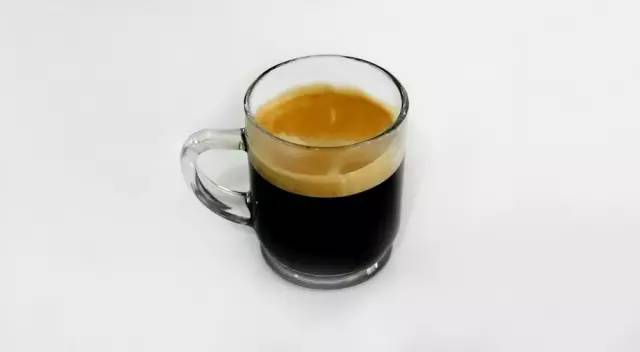Flavor characteristics, producing areas and cooking parameters of single bean in Wahana Manor, Indonesia

Professional barista communication, please pay attention to coffee workshop (Weixin Official Accounts cafe_style)
Indonesia Wahana Estate Single Bean Flavor Characteristics, Producing Areas and Brewing Parameters
The coffee farmers in the region are basically hand-processed coffee, so they already have good experience and methods. Therefore, Wahana Manor uses farmers 'skills and advanced equipment to achieve the goal of producing sun-cured mantnin.
At the beginning, Wahana Manor was dried in a semi-open space with skylight, trying to produce 100% sun-dried mantinin. However, due to the serious influence of humid climate during the drying period, the stability of quality was not ideal. Therefore, the final adjustment process was natural sun-drying in the first stage + machine drying in the second stage. With this unique treatment method, Hahana's unique sun-dried mantinin flavor was refined.
After saying goodbye to local children Anna, Esther, Karya, I walked along the path into the coffee garden. From afar, I could already see many workers working hard in the coffee garden. They chatted happily from time to time and focused on picking from their hands.
When I walked in, I found that their clothes were very special. They were so considerate that they wore the traditional clothes worn by Batak people at weddings and funerals today. The boys would wear a turban on their heads and a shawl on their right shoulders, while the girls would wear ornate embroidered shirts and skirts in addition to the turban. It was a bit like the clothes of Taiwan aborigines. These clothes represented their status in the tribe!
After putting on this special outfit and tying a bucket around my waist, I'm ready to work with you!
Wahana Estate covers an area of 500 ping and has more than 700 employees who are mainly responsible for coffee plantation work and organic cultivation. The owners said that the work of boys and girls at wahana estate is not quite the same. The boys are responsible for preparing the ground and taking care of the plants, while the girls 'main job is to collect coffee beans. The coffee garden works from 8 a.m. to 5 p.m., with a lunch break and two short breaks. At 4 p.m., they check the harvest for the day. If the harvest is insufficient, they continue working until 5 p.m.
As I gathered, I asked the owner of the estate how much production they needed each day. "Each person has to harvest 30 kilograms of coffee fruit every day, and one kilogram of coffee fruit is about six cups of coffee."“wow! So that's 180 cups of coffee per person per day! Every cup of coffee is really hard to come by-I will cherish every cup of coffee I drink in the future!"
I thought it was easy to pick coffee, just pick the red fruit from the tree, but the speed of the red fruit of the coffee tree is different, the number of harvests per tree is very limited, and you must walk through each coffee tree every day to harvest the number of coffee fruits you need every day. When I asked them what they thought of their work and their international reputation for mantning coffee, they said that although it was hard work, they were proud to contribute to the coffee industry and produce world-famous quality coffee, and they themselves loved coffee and drank a cup of coffee every morning, noon and evening.
After collecting a certain amount of coffee cherries, these bags of coffee cherries are sent to the washing plant for processing. Water washing method is the most common method of green bean treatment. Besides water washing method, there are also different treatment methods such as solarization and semi-water washing.
In the washing factory, I saw bags of coffee cherries being arranged at the station to prepare for transformation. Some of these cherries came from the coffee garden of Wahana Manor, and some were purchased from coffee farmers around Toba Lake. They receive coffee cherries from all over the world, and they will first carry out preliminary manual screening, and the cyan coffee cherries will be selected first before entering the process of washing coffee beans.
The first step in processing the fruit is to sift out the floating beans and sort them. The harvested coffee fruit is poured into a large tank. The ripe and full fruit will go to the next stage of screening, while the immature or overripe fruit will float up and be rejected.
The second step is to remove the pulp, fresh fruit into the pulp screening machine, using pressure to turn the cherry to remove the pulp, immature fruit because the pulp is not easy to separate, will be screened at this stage. After the pulp sifting machine, what is left is pectin, sheepskin and seeds.
The third step is fermentation to remove pectin. The pulp-removed seeds with pectin are transferred to a fermentation tank for 16-36 hours. This process removes pectin by biological decomposition through fermentation. Wahana because the number of cherries to be processed every day is very large, there are 16 fermentation grooves in the factory, and 11-13 are used every day for fermentation.
In the final step, the fermented beans are de-saccharified and the outer membrane removed, followed by drying. High-quality beans are machine-dried directly to ensure quality, while ordinary beans are sun-dried to reduce moisture content to 12%. (The solarization we see in Medan is the second solarization process.)
The endless sun field, you can see the color is not the same, the original here in addition to the general process of coffee fruit processing, but also will be "honey treatment", honey treatment coffee is removed after the peel, keep the pulp part directly dried, and then remove the pectin and shell. After the honey treatment of beans is perfectly executed, it will enhance the body and sweetness of coffee, reduce acidity, and the aroma of beans will be more detailed, but the labor and risk required for honey treatment are higher than that of traditional washed beans. Once the sun is insufficient, beans are easy to mold. After visiting the coffee from green beans to final refining process, I deeply feel that the coffee I drink every day at 7-ELEVEN is really a cup of coffee.
Indonesia Indonesia
Population: 23,742,400
In Indonesia, coffee beans slowly spread from Java to neighboring islands, reaching Sulawesi first in 1750, before extending to northern Indonesia. After planting began around Lake Toba in 1888, it eventually spread to Lake Tawar in the Gayo region in 1924.
SUMATRA
Sumatra has three main cultivation areas: the northern part of Aceh, the area slightly south around Lake Toba, and the recently emerged islands near Mangkuraja. It may also be traced to smaller areas of Takengon, Bener Mariah in Aceh, Lintong, Sidikalang, Dolok Sanggul and Seribu Dolok around Lake Doba. Coffee beans sold in the area were commonly known as "Sumatra Mantenin," but there is no actual place name for Mantenin, which comes from the ethnic name of the local islanders. Usually there are grades of mantenin, classified as Grade1 or Grade2. The grading method is undoubtedly based on cup testing quality rather than the generally believed raw beans themselves. But I'm still skeptical about recommending Grade1, because it seems to be flooding. It's odd to divide the varieties into batches, so most Sumatra beans are a mix of unknown varieties. Sumatra coffee beans are exported through Medan port, but they stay at the port for too long before export, and the hot and humid climate factors will not be conducive to the quality of coffee beans.
Altitude: Aceh 1100-1300m, Doba Lake 1100-1600m, Mangkuraja1100-1300m
Harvest: September-December
Varieties: Typica (including Bergandal, Sidikalang, Djember), Timtim, Ateng, Onan Gajang
JAVA
In Indonesia, this area inherited Dutch colonial customs and customs, so there are more large coffee plantations. The four main coffee fields, covering 4000 hectares, were formerly government estates. Coffee beans from this region enjoyed a reputation for excellence at the time, although I believe that a large number of formula beans have replaced "Mocha-Java" coffee beans not long ago. Java coffee beans used to be high for a long time, but in the 20th century there has been a significant decline in prices. The planting area covers the vicinity of Ijan volcano in eastern Java and western Java.
Altitude: 900-1800m
Harvest: September-September
Varieties: Typicas, Ateng, USDA
SULAWESI
Even though seven plantations supply about 5 per cent of Sulawesi's production, local production is dominated by smallholder supply. Most Arabica beans are grown high around Tana Toraja, Kalosi in the south is a brand, and two lesser-known areas are west of Mamasa and south of Kalosi, Gowa. There are a few particularly interesting coffee beans that have been washed, which are worth pondering and are highly recommended to try when you have the opportunity. Semi-washing treatment is a common method in Sulawesi, and local production is also quite a lot of Roast beans.
Tana Toraja 1100-1800m, Mamasa 1300-1700m, Gowa average 850m
Harvest: May-November
Breed: S795, Typicas, Ateng
FLORES
Flores is a small island located about 320 km (200 mi) east of Bali, one of the Indonesian archipelagos. As a latecomer to the coffee industry, it has developed a good reputation for growing coffee. In the past, Flores produced coffee that was mostly sold domestically or mixed with other coffees for export, and rarely sold directly under the name "Flores Coffee." There are active and dormant volcanoes on the island, with a mixture of Bajawa volcanoes having a great positive impact on the main cultivation areas. In coffee processing, the semi-wash process is the most common treatment in the region, and some coffee beans are still produced by the full wash process.
Tana Toraja 1200-1800m, Mamasa 1300-1700m, Gowa average 850m
Harvest: May-September
Varieties: Typicas, Ateng, Robusta
BALI
Coffee came to Bali relatively late and was originally grown on the Kintamani plateau. Coffee production was greatly affected by the Gunung Agung eruption in 1963, which killed more than 20,000 people and caused extensive damage to eastern Bali. In the late 1970s and early 1980s, the government distributed Arabica seedlings to boost coffee production, but this was considered to be of limited effect because today about 80 percent of the island's production consists of robusta beans. Although tourism provides the largest revenue, agriculture employs the largest number of people on the island, and Japan used to be the largest buyer.
Altitude: 1,250- 1,700 m
Harvest: May-October
Varieties: Typicas, Typica derivatives, Robusta
Sumatra Mandheling Wahana Natural 0 Defect
countries Sumatra
producing areas Sidikalang Town, Lintong, North Sumatra
Manor Wahana Manor
approach Sun treatment, machine drying
varieties Tibika, Katimo, Kadura.
altitude 1,200 - 1,400 m
Wahana Estate is located in the famous Lindong area of North Sumatra.
Founded in 2005 in Lae Mungkur village,
Sidikalang, northwest of Toba Lake,
It covers an area of about 450 acres and mainly grows coffee, vegetables and other crops.
In 2006, Wahana Manor began a new coffee project,
That is to say, the production of sun-dried mantning coffee;
Traditional in coffee,
All of them were harvested by so-called wet stripping treatment, that is, the peel and pulp were removed first,
After simple washing and fermentation,
After a day or two of exposure,
After the moisture content of the coffee green beans is reduced to 30-50%,
And then transported to the processing plant down the mountain for post-processing.
Sunlight ine differs from traditional treatments,
Fully ripe coffee berries must be harvested by experienced farmers
After several days of natural sun drying,
Dry the berries completely in a dryer,
Finally, using the special shelling equipment for sun-dried beans,
To create a superior sun flavor.
Sumatra Wahana Estate Solarization Hand-selected batch
Flavor description:
Rich tropical fruit flavors, cantaloupe,
Pineapple, pepper, sun fermentation aroma rich,
Complex vanilla aromas, cherry chocolate sweetness.
Everyone's favorite taste is not necessarily,
Consider buying small quantities to try different baking degrees.
A burst of beans
One blast ends with a bean.
From the end of the first explosion to the end of the second explosion, the beans are in the middle.
Touch the next bean with two explosions
10-15 seconds into the second explosion.
Second explosion dense next bean
I hope you baking experts find something better.
□ Production area: North Sumatra/Sidikalang/Lae Mungkur
□ Producer: WAHANA Estate
□ Altitude: 1350--1500M
□ Varieties: Catimor,Typica
□ Treatment: Wahana sun
□ Grade: Grade 1 18
□ Recommended baking: one burst middle
□ Flavor description: fruit aroma is obvious, high sweetness, solid mellow, rich and varied sun flavor…
□About Wahana:
A group of female coffee workers had a dream...
Want to produce a different mantelin than it is now…
To own a beautiful farm...
To produce mantelin unaffected by the rainy season...
So there's Wahana.
In 2006, Wahana Estate was established in Sidikalang, northwest of Lake Toba in North Sumatra. It uses advanced equipment to grow coffee, vegetables and other crops on a 460-acre farm. The coffee department on this farm introduced the same advanced processing equipment as Brazil, and initially used 100 acres to grow coffee.
In the autumn of 2008, the refinery was completed, and initially, of course, it was mainly based on ordinary mantelin, but Wahana's desire to produce different mantelin has always been Wahana's desire, so a new production project-solar mantelin was started.
Important Notice :
前街咖啡 FrontStreet Coffee has moved to new addredd:
FrontStreet Coffee Address: 315,Donghua East Road,GuangZhou
Tel:020 38364473
- Prev

Differences, distinctions and awards of single beans in Wahana Manor, Indonesia
Professional baristas exchange please pay attention to the coffee workshop (Wechat official account cafe_style) Indonesia Wahana Manor single bean difference, distinction and award situation put on this special dress, tied with a bucket around the waist, I will also be ready to start work with you! Wahana Manor covers an area of 500ping. There are more than 700 employees here, who are mainly responsible for the work of the coffee farm and organic cultivation.
- Next

Grading, price, raw bean and baking curve of single bean in Wahana Manor, Indonesia
The exchange of professional baristas please pay attention to the coffee workshop (Wechat official account cafe_style) there is a group of female coffee workers who have a dream of producing single beans, price, raw beans and baking curve. Manning wants to have a beautiful farm that is not affected by the rainy season. Hence the Wahana company. In 2006, Wahanna
Related
- Does Rose Summer choose Blue, Green or Red? Detailed explanation of Rose Summer Coffee plots and Classification in Panamanian Jade Manor
- What is the difference between the origin, producing area, processing plant, cooperative and manor of coffee beans?
- How fine does the espresso powder fit? how to grind the espresso?
- Sca coffee roasting degree color card coffee roasting degree 8 roasting color values what do you mean?
- The practice of lattes: how to make lattes at home
- Introduction to Indonesian Fine Coffee beans-- Java Coffee producing area of Indonesian Arabica Coffee
- How much will the flavor of light and medium roasted rose summer be expressed? What baking level is rose summer suitable for?
- Introduction to the characteristics of washing, sun-drying or wet-planing coffee commonly used in Mantenin, Indonesia
- Price characteristics of Arabica Coffee Bean Starbucks introduction to Manning Coffee Bean Taste producing area Variety Manor
- What is the authentic Yega flavor? What are the flavor characteristics of the really excellent Yejasuffi coffee beans?

